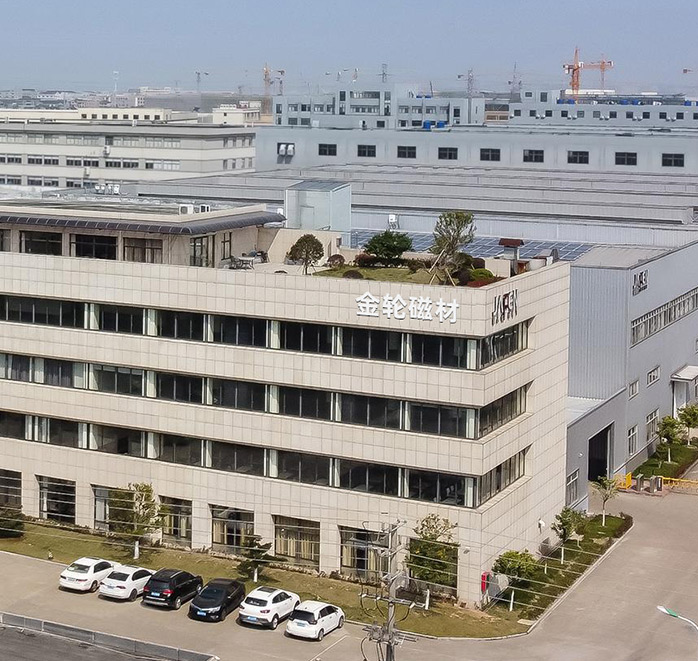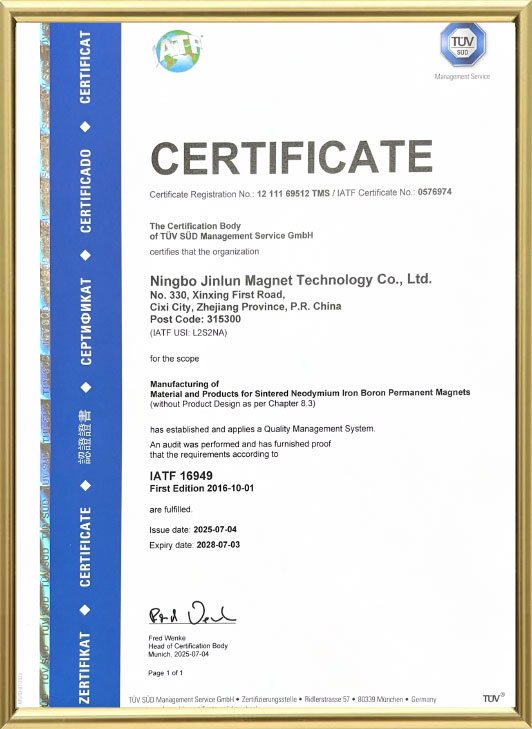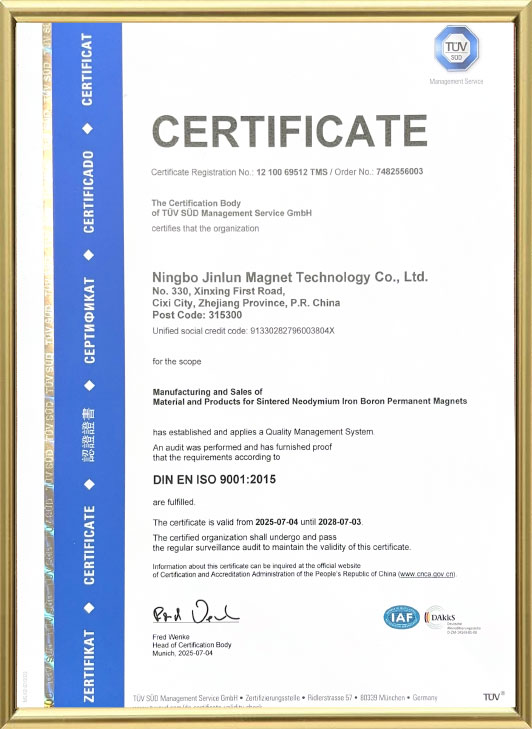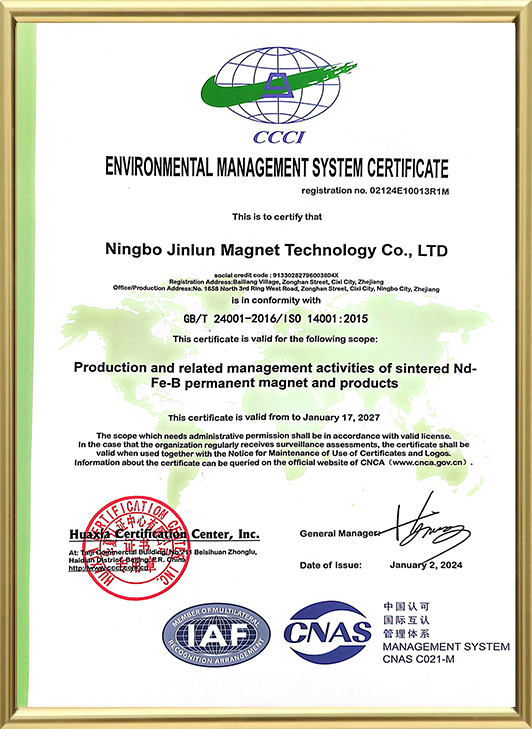I. Definition and Structural Principle of Halbach Components Magnets
(I) Basic Definition
Halbach Components Magnets, also known as Halbach component magnets, are a type of permanent magnet assembly with a unique structure. They are composed of multiple permanent magnet units arranged in a specific pattern, a concept first proposed by physicists in the 1980s. Unlike traditional permanent magnets, Halbach component magnets utilize a clever arrangement of magnets to generate a high-intensity, highly uniform magnetic field in a specific area while effectively minimizing magnetic field leakage on the other side, achieving a highly directional concentration of the magnetic field.
(II) Structural Principle
The core structural characteristic of Halbach component magnets is that adjacent magnet units have different magnetization directions. Common arrangements include two-dimensional and three-dimensional structures. In two-dimensional structures, the magnet units are typically arranged in a circular or rectangular shape, with the magnetization directions alternating according to a specific pattern, such as "north pole up, south pole to the right, north pole down, south pole to the left," and so on. This arrangement allows the magnetic fields within the magnets to superimpose and enhance each other, forming a strong and uniform magnetic field on the target side, while the magnetic fields on the other side cancel each other out, significantly reducing magnetic flux leakage. The three-dimensional structure of Halbach component magnets is more complex. The orderly spatial arrangement of multiple magnets further optimizes the magnetic field distribution, meeting the requirements for higher magnetic field uniformity and strength.
II. Material Properties and Advantages of Halbach Components Magnets
(I) Material Properties
High Magnetic Energy Product: The permanent magnet materials used in Halbach component magnets are mostly high-performance rare earth permanent magnets, such as neodymium iron boron (NdFeB), which possess a high magnetic energy product. For example, sintered NdFeB has a magnetic energy product (BH) max of 30-50 MGOe. This enables Halbach component magnets to generate a strong magnetic field within a limited volume, meeting the strong magnetic field requirements of high-precision, high-power equipment. Ningbo Jinlun Magnet Technology Co., Ltd., specializing in the production of high-performance magnets, further enhances the magnetic stability of this type of permanent magnet material through composition optimization and process control, laying the foundation for the high-quality manufacturing of Halbach component magnets.
Excellent Temperature Stability: Although the magnetic properties of permanent magnet materials are relatively sensitive to temperature, Halbach component magnets can achieve excellent temperature stability through optimized material formulation and manufacturing processes, such as the addition of rare earth elements such as dysprosium (Dy) and terbium (Tb). Some specially designed Halbach component magnets have an extended operating temperature range of 150-200°C, maintaining stable magnetic properties even in high-temperature environments, broadening their application areas.
Physical Properties: NdFeB-based Halbach component magnets have a density of approximately 7.4-7.6 g/cm³, making them high-density materials, which should be considered in applications requiring precise weight accuracy. While it possesses high hardness (Vickers hardness of approximately 500-600 HV), it is also quite brittle, requiring careful stress control during processing to prevent cracking.
(II) Unique Advantages
Efficient Magnetic Field Utilization: Compared to traditional permanent magnets, Halbach assembly magnets can concentrate the magnetic field in a specific direction, improving magnetic field utilization efficiency. For example, in magnetorheological polishing applications, a Halbach array made of N35 grade NdFeB permanent magnet material can achieve a removal rate of 1.38 mm³/min when polishing K9 optical glass. This is 4.4 times the rate of a linear air-gap yoke and 6.9 times that of an alternating N-S pole array, significantly improving processing efficiency.
Compact and Lightweight Design: Because Halbach assembly magnets do not require an iron yoke to concentrate and guide the magnetic field, they are smaller and lighter than traditional permanent magnet structures with iron yokes. This compact and lightweight design offers significant advantages in applications where size and weight are strictly restricted, such as portable medical devices and small electronic instruments. Low Magnetic Leakage and Environmentally Friendly: Halbach Components magnets effectively reduce magnetic field leakage, minimizing magnetic interference with the surrounding environment and other electronic components. This ensures stable operation and improves measurement and imaging accuracy in applications sensitive to magnetic interference, such as medical imaging equipment and precision electronic measuring instruments.
III. Halbach Components Magnet Manufacturing Process
(I) Core Production Process
Raw Material Preparation: Based on design requirements, appropriate grades of permanent magnet materials, such as NdFeB alloy, are selected. Rare earth elements, iron, boron, and a small amount of modifying elements are mixed in precise proportions and formed into alloy ingots via vacuum induction melting. Subsequently, a strip casting process is used to rapidly cool the high-temperature alloy liquid onto copper cooling rolls, forming thin strips with fine grains and uniform composition, providing high-quality raw material for subsequent powder production.
Powder Production Process: First, a hydrogen crushing (HD) process is used to place the alloy strips in a hydrogen atmosphere, where the chemical reaction between hydrogen and rare earth elements embrittles the alloy. The embrittled alloy is then crushed into micron-sized powders using jet milling, typically with a particle size of 2-5μm. During the powder production process, the powder particle size distribution must be strictly controlled to ensure uniform density and magnetic properties of the final magnet.
Magnet Forming and Assembly: Custom molds are created based on the design of the Halbach component magnet. After the micron-sized powder is filled into the mold, a strong, directional magnetic field is applied in a magnetic field orientation device to align the magnetic domains of the powder particles in a specific direction, enhancing magnetic properties. Simultaneously, hydraulic or isostatic pressing is used to form the green compacts of individual magnet units. Multiple magnet units are then assembled in a precise arrangement to form the complete Halbach component magnet structure. During the assembly process, the positional accuracy and magnetization direction of each magnet unit must be ensured. Ningbo Jinlun Magnet Technology Co., Ltd., with its state-of-the-art permanent magnet production equipment, achieves higher-precision control in mold customization and magnet assembly, ensuring the structural consistency of the Halbach component magnets. Sintering and Heat Treatment: The assembled magnet components are sintered in a vacuum or inert gas furnace at temperatures between 1000°C and 1150°C. During this process, the powder particles bond through solid-phase diffusion, forming a dense magnet structure. After sintering, a two-stage aging treatment is required: the first stage at 500°C to 600°C, and the second stage at 300°C to 400°C. This eliminates internal stresses, optimizes the magnetic domain structure, and stabilizes magnetic properties. Ningbo Jinlun Magnet Technology Co., Ltd., with over 30 years of industry experience, leverages its deep understanding of sintering and heat treatment processes to further enhance the performance stability of Halbach component magnets by precisely controlling the temperature profile and holding time.
Precision Machining and Surface Treatment: After sintering, Halbach component magnets undergo precision machining using diamond tools, such as grinding, wire cutting, and drilling, to ensure dimensional tolerances within ±0.01 to ±0.05mm, meeting the requirements of high-precision applications. After processing, surface pretreatment, including degreasing and pickling, is performed. Electroplating (e.g., nickel-copper-nickel, zinc, etc.), epoxy resin coating, and parylene coating are then used to form a protective layer, enhancing the magnet's corrosion resistance in various environments. Ningbo Jinlun Magnet Technology Co., Ltd., which integrates innovative R&D and manufacturing, optimizes surface treatment processes to further enhance the weather resistance of Halbach component magnets, making them suitable for more complex applications.
(II) Process Difficulties and Technical Requirements
Precise Assembly of Complex Structures: The complex arrangement of Halbach component magnets requires extremely high assembly precision. Positional deviations of individual magnet units and even slight errors in magnetization direction can significantly affect the uniformity and intensity of the magnetic field distribution. Therefore, high-precision positioning tooling and inspection equipment are required to monitor and adjust the position and orientation of the magnet units in real time during the assembly process.
Magnetic Field Uniformity Control: Achieving a highly uniform magnetic field within the target area is one of the key technical challenges in manufacturing Halbach component magnets. In addition to optimizing the magnet arrangement design, the manufacturing process also requires strict control over the consistency of material properties, the dimensional accuracy of the magnet units, and the stability of the sintering and heat treatment processes. Fluctuations in any of these steps can lead to a decrease in magnetic field uniformity.
Addressing Material Brittleness: Due to the brittleness of permanent magnet materials, cracks and chipping are prone to occur during processing and assembly. To address this issue, low-speed and low-feed processing parameters, combined with an efficient cooling system, are required to reduce processing stress. Furthermore, flexible connections and buffering measures should be implemented during assembly to prevent damage to the magnets due to mechanical impact.
IV. Application Areas of Halbach Components Magnets
(I) Medical and Biomedical Fields
Magnetic Resonance Imaging (MRI) Equipment: Halbach component magnets play a vital role in miniaturized, portable MRI systems. Their compact structure and high magnetic field uniformity provide a stable and uniform magnetic field environment within the imaging area, enabling high-precision tissue imaging. For example, a low-cost, compact, small-scale nuclear magnetic resonance (NMR) system based on Halbach magnets has achieved a spectral full width at half maximum of 20 ppm within a cylindrical region with a diameter of 1.5 mm and a length of 1 mm, reaching a leading level. This has promoted the application of portable MRI equipment in primary care and on-site testing.
Medical Testing Instruments: In some small medical diagnostic instruments, such as cell analyzers and molecular diagnostic devices, Halbach component magnets can be used to generate specific magnetic fields to detect and analyze magnetic markers in biological samples, improving detection sensitivity and accuracy. Their low magnetic flux leakage characteristics also prevent interference with other precision electronic components within the instrument, ensuring stable operation.
(II) Industrial Manufacturing and Processing
Magnetorheological Polishing Equipment: Halbach component magnets are used in magnetorheological polishing equipment for high-precision processing applications such as optical glass and precision molds. Their efficient magnetic field utilization generates a strong and uniform magnetic field within the polishing area, allowing the magnetic particles in the magnetorheological fluid to form an orderly polishing abrasive, achieving high-precision polishing of the workpiece surface. As mentioned above, using the Halbach array to polish K9 optical glass can achieve an ultra-smooth surface with a surface roughness of less than 1nm Ra in a short period of time, significantly improving processing quality and efficiency. Ningbo Jinlun Magnet Technology Co., Ltd., a professional manufacturer of sintered NdFeB magnets, can customize Halbach assembly magnets to match polishing equipment requirements, further optimizing polishing results.
Non-destructive testing equipment: In non-destructive testing of industrial products, such as internal defect detection in metal materials and quality assessment of composite materials, Halbach assembly magnets can be used to manufacture highly sensitive magnetic field detection sensors. By detecting magnetic field changes on the surface of the inspected object, internal defects and quality issues can be quickly and accurately identified, improving product quality control.
(III) Electronics and Information
Hard disk drives (HDDs): In HDD voice coil motors, Halbach assembly magnets, through precise magnetic field design, enable fast and stable positioning of the magnetic head, improving data read/write speeds and storage reliability. Their compact structure also helps reduce the size of HDDs, meeting the trend of miniaturization of electronic devices.
Sensor Technology: In applications such as position sensors and speed sensors, Halbach component magnets can be fabricated to create shapes with specific magnetic field distributions. When used with sensitive components such as Hall elements, they enable high-precision signal detection. For example, in scenarios such as joint position detection in intelligent robots and motion control in industrial automated production lines, Halbach component magnet sensors can provide accurate position and speed feedback, ensuring precise system operation.
(IV) New Energy and Environmental Protection
Wind Power Equipment: In direct-drive wind turbines, Halbach component magnets can be used in the rotor structure. Their high magnetic energy product and efficient magnetic field utilization improve generator efficiency, reduce magnet usage and motor size, and lower equipment costs. Furthermore, the low magnetic flux leakage characteristics of Halbach component magnets help reduce magnetic interference with the surrounding environment, improving the overall operational stability of wind farms.
Wastewater Treatment and Purification: In magnetic separation wastewater treatment equipment, Halbach component magnets can be formed into a multi-segment magnetic circuit, creating a gradient magnetic field. This improves the separation efficiency of tiny magnetic particles in wastewater, achieving efficient wastewater purification. Compared to traditional magnets, Halbach component magnets achieve stronger magnetic separation in a smaller footprint, driving the miniaturization and efficiency of wastewater treatment equipment.
As a professional permanent magnet manufacturer and wholesaler, Ningbo Jinlun Magnet Technology Co., Ltd. provides customized Halbach Components Magnet solutions tailored to the needs of these diverse applications. We oversee the entire process from magnet design and production to delivery, leveraging continuous innovation to deliver high-quality, competitive products that meet customers' diverse application needs.
 EN
EN English
English 中文简体
中文简体 русский
русский Deutsch
Deutsch 日本語
日本語 한국어
한국어






















